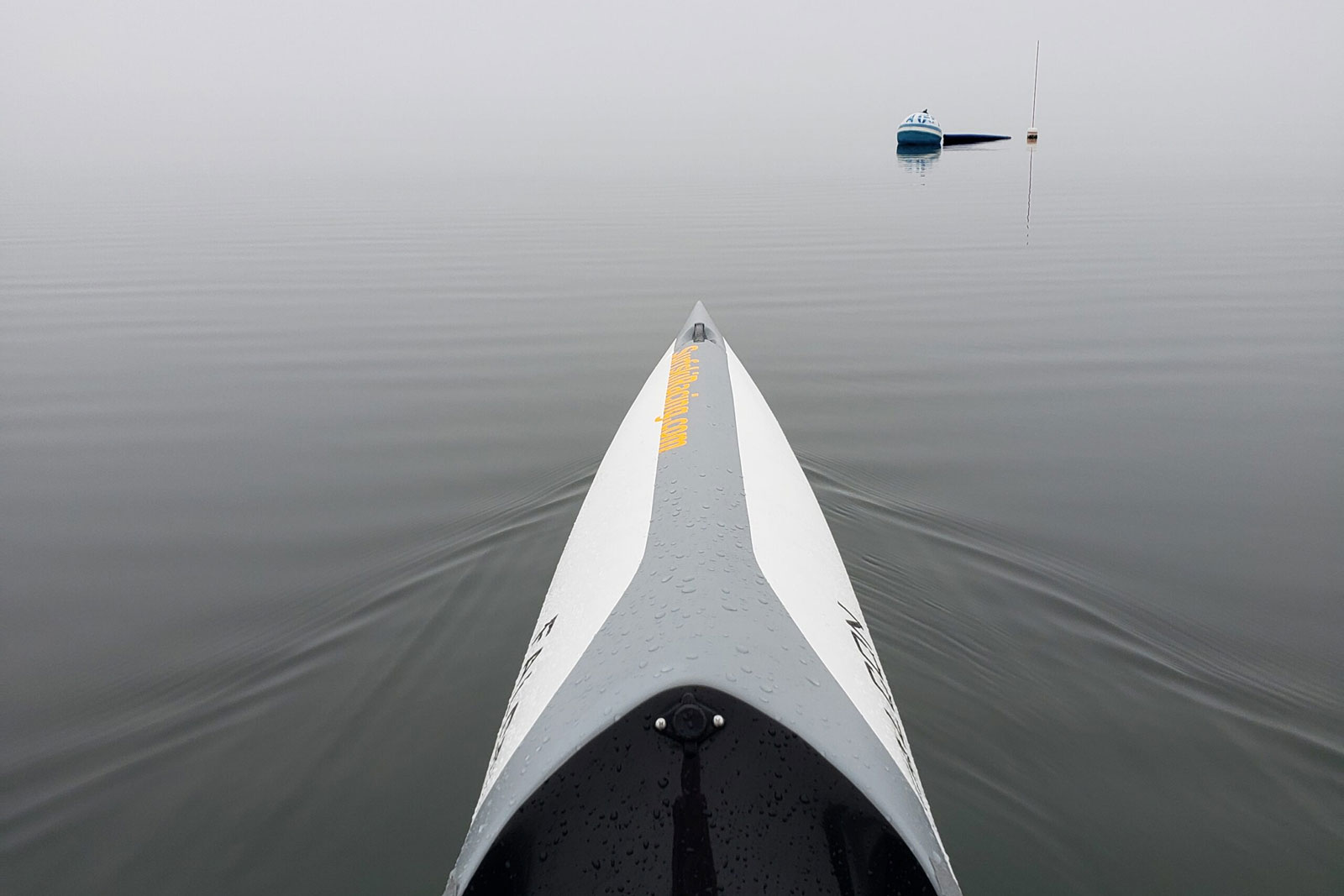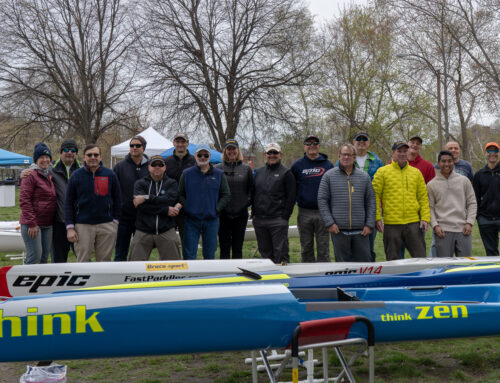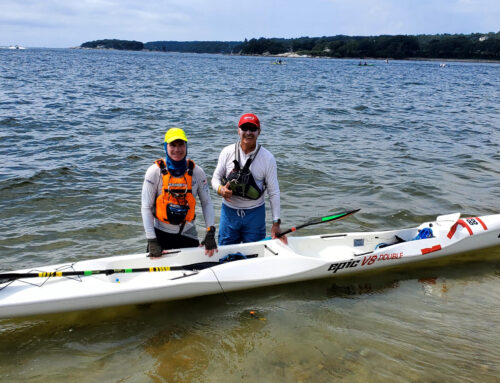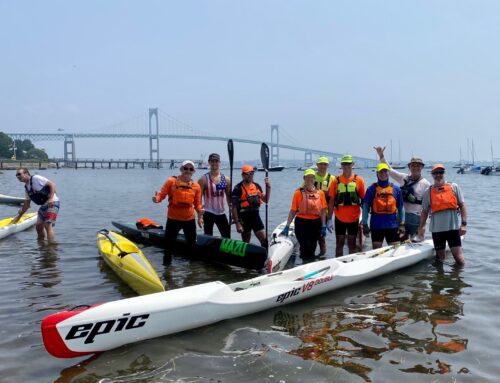If you paddle long enough, probably in the early phases of your career, you probably have been lost in the fog while paddling. This has happened twice to me, once paddling on my home waters, the Sakonnet River in Portsmouth, Rhode Island, and the other on Narragansett Bay at the beginning of one of my 38-mile circumnavigation of Aquidneck Island. Fortunately both times, I was only lost for 5 to 10 minutes before I was able to figure out where I was. Another potential time was during one of my 17 Blackburn Challenges around Cape Ann in Gloucester, Massachusetts when a fog bank rolled in at mile 9. I was fortunate I was slightly ahead of the fog bank while the paddlers behind me were engulfed in fog until it passed.
There are times you just want to go paddling foggy or not. Today was one of those times for me. Below are the safety measures you can take to prevent being lost in the fog. It can be a scary situation or at least unnerving.
The safest thing to do is put waypoints in your GPS and navigate by them. Not many of us do that if we just want to go out for a 6 to 8-mile paddle. Short of that here are some practical tips that will keep you safe.
- Paddle in a familiar and safe place where you know your landmarks. I know where every land marker is on the Sakonnet River.
- Know the forecast.
- Have a compass on your ski.
- Stay close to shore to see these landmarks and refer to your GPS to keep track of your distance and time. Important to calculate if you get lost, how much time has elapsed or simply how long to the next mile marker of the landmark. Fog robs your normal time/distance awareness.
- Most Garmin watches have a simple navigation page with a compass you can use for the direction you are heading or have a trackback feature.
- Know how to use the navigation feature before you need it. The first time I got lost I was only 30 yards from Black Point. I stopped paddling, put my feet out, took my Garmin watch off the foot strap and played with the navigation feature until I figured out how to use it. Then I headed in the right direction toward land.
- If you can avoid channel markers since other vessels will be using them to navigate in the fog. Hearing an approaching craft without seeing it or you being seen could be dangerous.
- Make a mental note of the current wind direction and waves in relation to the land so if the wind changes you become aware that you are paddling away from shore or the landmark.
- Know what the tide is doing, ebbing, flowing.
- Listen for the waves pushing up on the beach or other sounds that may alert you that land is near.
- Be aware that fog comes and goes, so do not stray too far from shore once it has lifted. It will often reappear sucking you back in the its grips.
- Make sure all your normal safety gear is fully charged and in working order that includes your phone, Vhf, your Garmin watch, leash, PFD, whistle, orange/lime green PFD, and a flashing light on your PFD.
- Tell your spouse, etc where you are paddling, and tell them to look at the real-time tracking that is available on most watches via email link or app.
- Lastly, try to stay calm if you do get lost. You will probably be lost only for a few minutes until you realize where you are.





Leave A Comment
You must be logged in to post a comment.